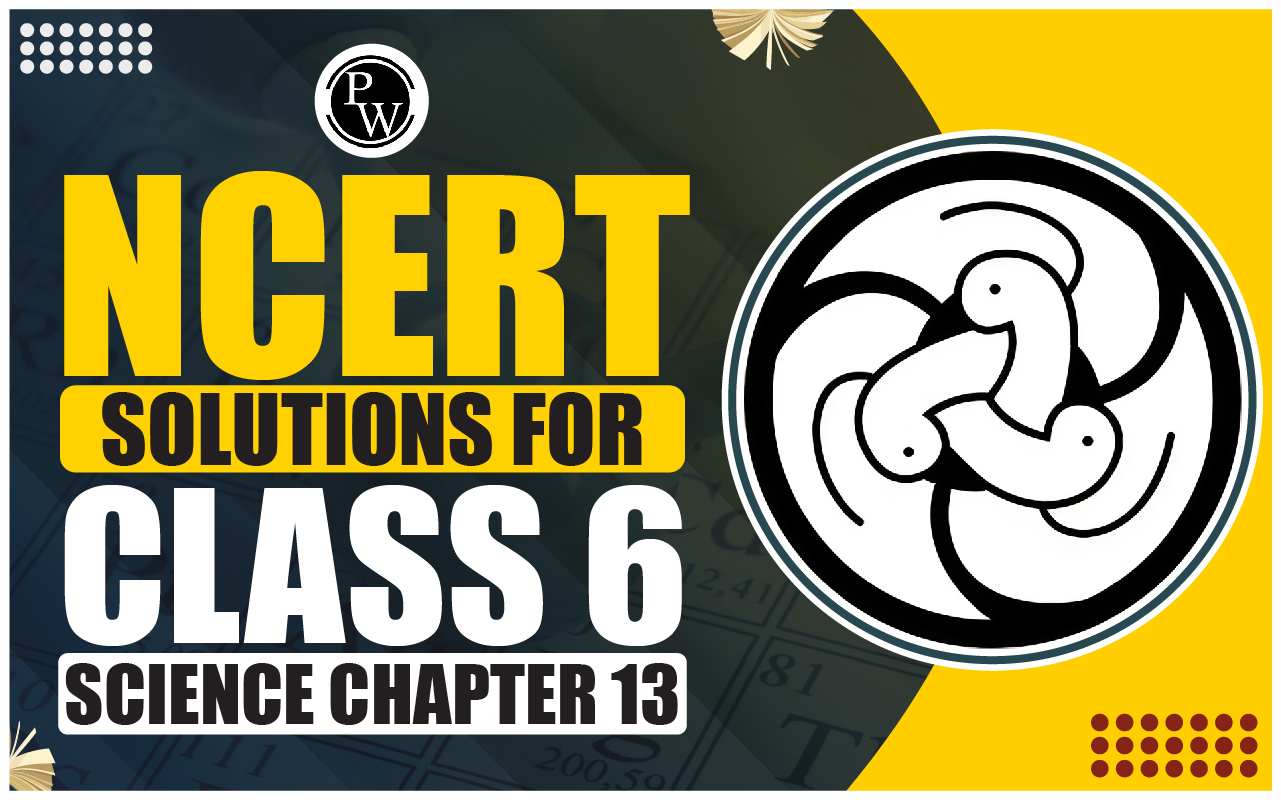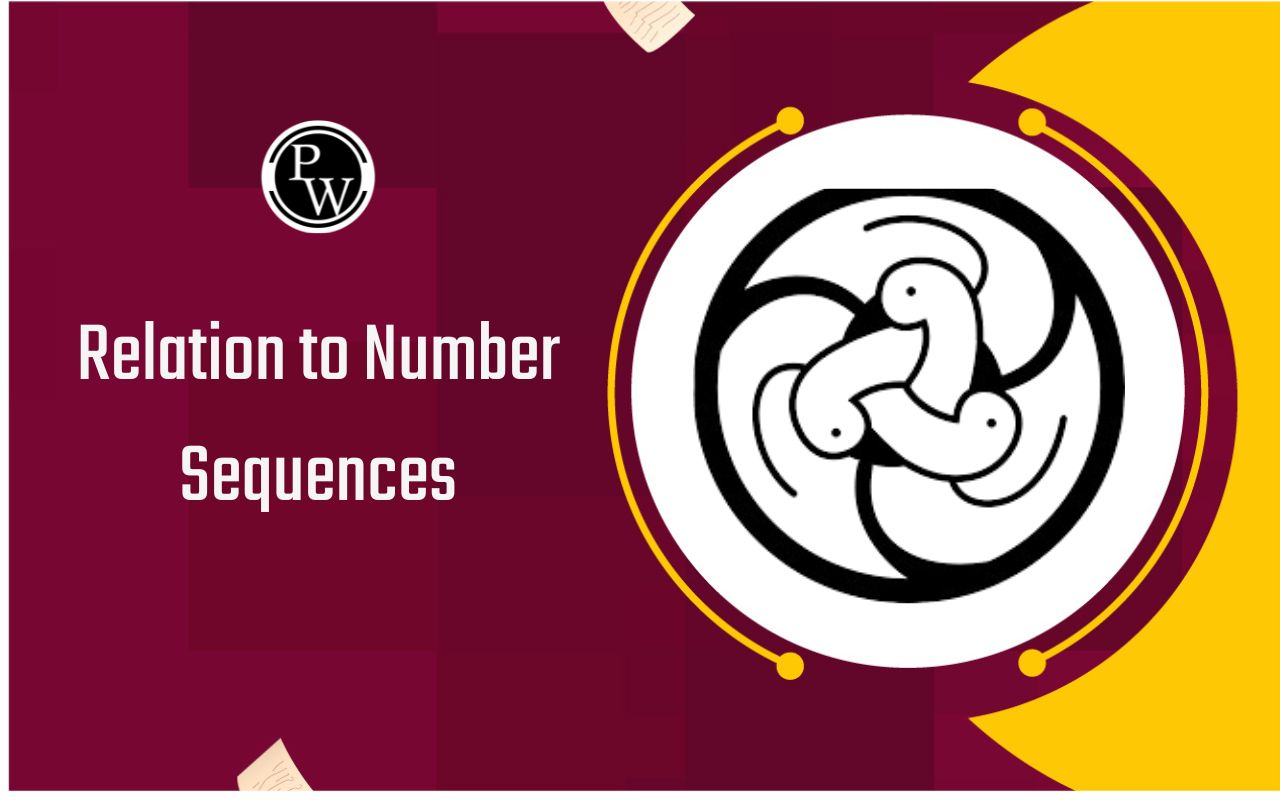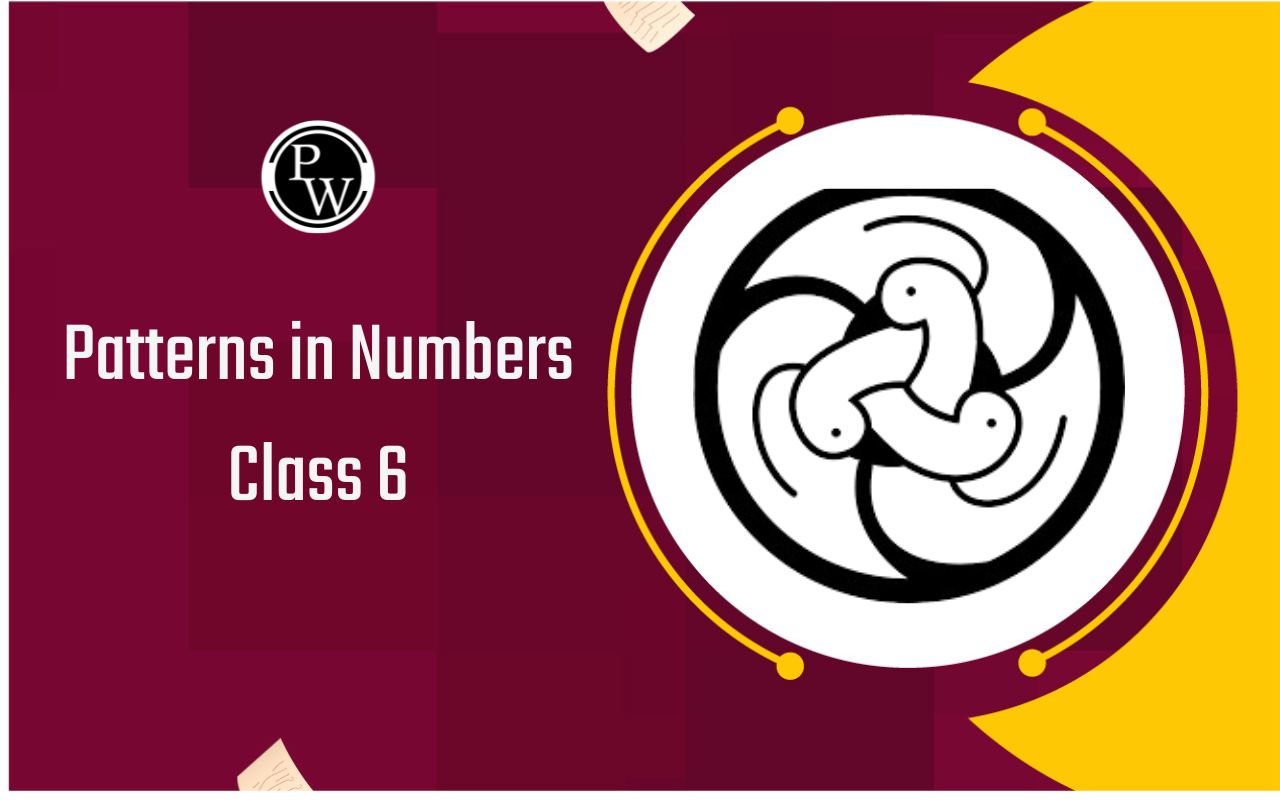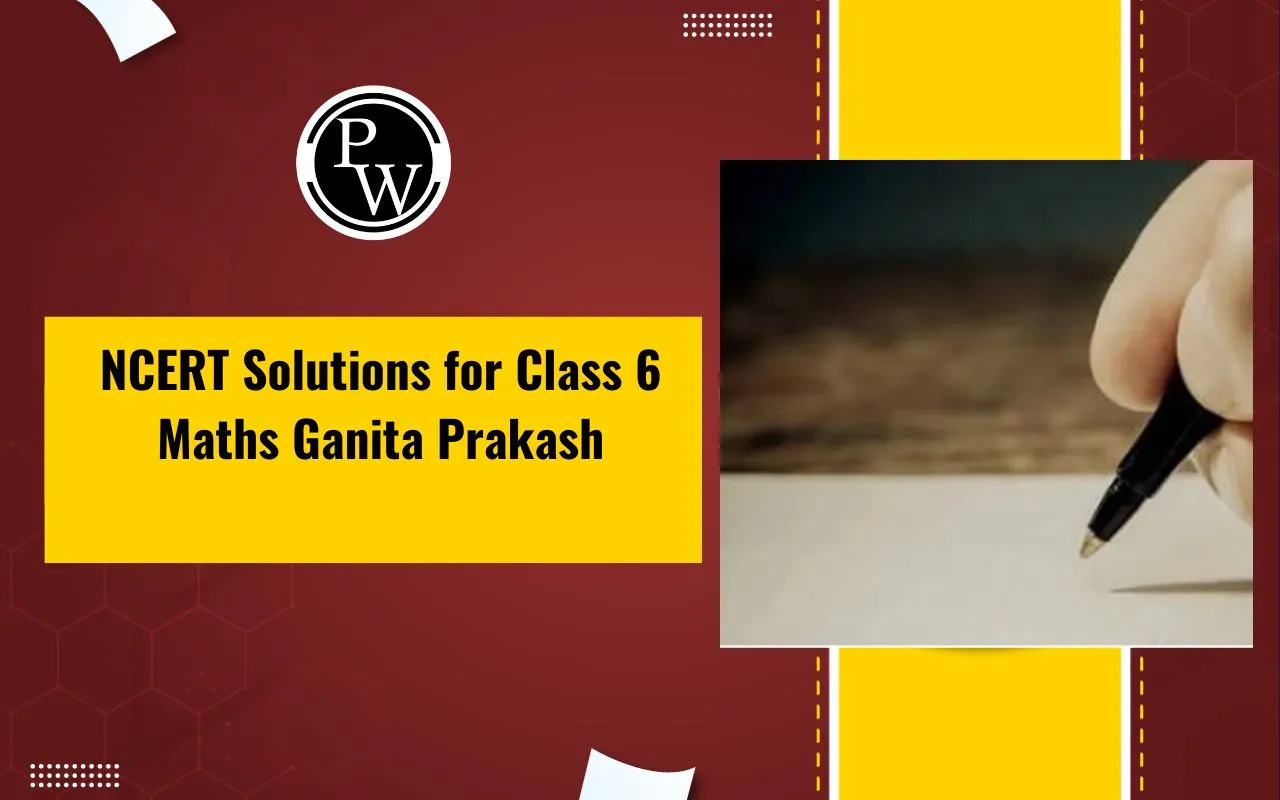

NCERT Solutions for Class 6 Science Chapter 13
NCERT Solutions for Class 6 Science Chapter 13: NCERT Solutions for Class 6 Science Chapter 13 Fun with Magnets, serve as useful study material for students in CBSE board Class 6 Science. These solutions offer detailed answers and explanations for the exercise questions found in the NCERT Class 6 Science textbook. Using these NCERT Solutions can enhance your confidence by improving your problem-solving skills in a particular subject. It's important for students to become familiar with this study material to achieve good marks in their examinations.NCERT Solutions for Class 6 Science Chapter 13 PDF Download
NCERT Solutions for Class 6 Science Chapter 13 Fun with Magnets Overview
These NCERT Solutions for Class 6 Science Chapter 13 are valuable for students preparing for exams. They offer comprehensive answers to the practice exercise questions in the NCERT textbook. By reviewing these solutions after studying the chapter from the NCERT Science textbook, students can anticipate the types of questions that may appear in the exam. PW provides each NCERT Solution to simplify and make studying enjoyable. Additionally, you can also download NCERT Solutions for Class 6 Maths to aid in revising the entire syllabus and securing higher marks in your examinations.
NCERT Solutions for Class 6 Science Chapter 1
NCERT Solutions for Class 6 Science Chapter 13 Fun with Magnets
The provided NCERT Solutions for Class 6 Science Chapter 13 will help you understand the discovery of magnets, magnetic and non-magnetic materials, magnet poles, finding directions using magnets, constructing magnets, and attraction and repulsion forces. 1. Fill in the blanks in the following (i) Artificial magnets are made in different shapes such as __________, __________ and ____________. (ii) The materials which are attracted towards a magnet are called________. (iii) Paper is not a ______ material. (iv) In the olden days, sailors used to find direction by suspending a piece of ___________. (v) A magnet always has __________ poles. Solution: (i) Artificial magnets are made in different shapes such as bar magnet , horse shoe and cylindrical. (ii) The materials which are attracted towards a magnet are called magnetic.(iii ) Paper is not a magnetic material.
(iv ) In the olden days, sailors used to find direction by suspending a piece of magnet .
(v ) A magnet always has two poles.
NCERT Solutions For Class 6 Science Chapter 12
2. State whether the following statements are true or false: (i) A cylindrical magnet has only one pole. (ii) Artificial magnets were discovered in Greece. (iii) Similar poles of a magnet repel each other. (iv) Maximum iron filings stick in the middle of a bar magnet when it is brought near them. (v) Bar magnets always point towards the North-South direction. (vi) A compass can be used to find East-West direction at any place. (vii) Rubber is a magnetic material. Solution: i) False ii) False iii) True iv) False v) True (Freely suspended bar magnet) vi) True vii) FalseNCERT Solutions for Class 6 Science Chapter 2
3. It was observed that a pencil sharpener gets attracted by both the poles of a magnet although its body is made of plastic. Name a material that might have been used to make some part of it. Solution: Iron might have been used to make some part of it. 4. Column I shows different positions in which one pole of a magnet is placed near that of the other. Column II indicates the resulting action between them for each situation. Fill in the blanks.| Column – I | Column – II |
| N-N | _______ |
| N-___ | Attraction |
| S-N | _____ |
| ___-S | Repulsion |
| Column – I | Column – II |
| N-N | Repulsion |
| N- S | Attraction |
| S-N | Attraction |
| S – S | Repulsion |
NCERT Solutions For Class 6 Science Chapter 15
5. Write any two properties of a magnet. Solution: Properties of a magnet are as follows- It attracts objects made of Nickel, Cobalt and Iron.
- Like poles of two magnets repel each other and opposite poles attract each other.
- A bar magnet has no markings to indicate its poles. How would you find out near which end its north pole is located?
NCERT Solutions for Class 6 Science Chapter 3
8. You are given an iron strip. How will you make it into a magnet? Solution: Take a bar magnet and keep in contact with one of its poles with one edge of the bar of iron.- Without lifting the bar magnet, move it along the length of the iron bar till you reach the other end.
- Lift the magnet and bring the pole (the same pole you started with) to the same point of the iron bar from which we began.
- Move the magnet again along the iron bar in the same direction as you did before.
- Repeat this process for about 30-40 times.
NCERT Solutions for Class 6 Science Chapter 8
10. A magnet was brought from different directions towards a toy boat that has been floating in water in a tub. The effect observed in each case is stated in Column I. Possible reasons for the observed effects are mentioned in Column II. Match the statements given in Column I with those in Column II.| Column I | Column II |
| Boat gets attracted towards the magnet | Boat is fitted with a magnet with a north pole towards its head |
| Boat is not affected by the magnet | Boat is fitted with a magnet with a south pole towards its head |
| Boat moved towards the magnet when the north pole was brought near its head | Boat has a small magnet fixed along its length |
| Boat moves away from the magnet when the north pole is brought near its head | Boat is made up of magnetic material |
| Boat floats without changing its direction | Boat is made up of non-magnetic material |
NCERT Solutions For Class 6 Science Chapter 16
Solution:
| Column I | Column II |
| Boat gets attracted towards the magnet | Boat is made up of magnetic material |
| Boat is not affected by the magnet | Boat is made up of non-magnetic material |
| Boat moved towards the magnet when the north pole was brought near its head | Boat is fitted with a magnet with the south pole towards its head |
| Boat moves away from the magnet when the north pole is brought near its head | Boat is fitted with a magnet with a north pole towards its head |
| Boat floats without changing its direction | Boat has a small magnet fixed along its length |
NCERT Solutions For Class 6 Science Chapter 9
NCERT Class 6 Science Chapter 13 Fun With Magnets Topic-Wise Discussion
The chapter begins by talking about magnets and how we use them in our daily lives. It also talks about the discovery of magnets, including how a Greek shepherd found natural magnets. The process of making artificial magnets was found later on. In this section, there's an activity for students to do at home to learn more about magnets. This chapter in "Fun with Magnets'' for Class 6 has five subtopics. Let's briefly discuss each of them. 1. Magnetic and Non - Magnetic Materials The first topic in NCERT Class 6 Science Chapter 13 starts with identifying magnetic and non-magnetic objects. To make it simple, students can attach a magnet to the end of a stick and use it to test various materials around them. They check if any materials stick to the magnet and note down the information in a table for future reference. Another activity in Class 6 Science Chapter 13 is looking for iron particles in soil or sand. 2. Poles of Magnet All magnets have two poles, and in this class 6 Science chapter 13, students will explore this idea further. The suggested activity will help them gain extra hands-on knowledge about this concept. They can use basic bar magnets and iron filings or paper clips to conduct this experiment.NCERT Solutions For Class 6 Science Chapter 6
3. Finding Directions Finding direction is one of the practical uses of a magnet, a technique employed by travellers for centuries. Using a magnet to determine direction is simple when one fully grasps the concept. In the NCERT Solutions chapter 13, Fun with Magnets for class 6 Science, students have a chance to delve deeper into the world of magnets. The section kicks off with the tale of a well-known Chinese emperor who used a magnet to find direction during his travels. Within the activity part of Fun with Magnets class 6 NCERT solutions, students will encounter a do-it-yourself task they can carry out at home to enhance their understanding of this concept. It also elaborates on how to use a compass for finding directions. 4. Make Your Own Magnet Creating a magnet is quite simple, and students can easily do it at home. The solutions provided in the NCERT Science book for Class 6, Chapter 13, offer a step-by-step process to make magnets successfully. In this do-it-yourself project, all you need is a piece of iron and a bar magnet to create a magnet at home. In the practical activity described in Chapter 13 of Class 6 Science, students also discover how to make a compass. For this, they only require a homemade magnet, a piece of foam, and a bucket of water. 5. Attraction and Repulsion Between Magnets The properties of magnets, including attraction and repulsion, are explored in the experiment outlined in the NCERT Solutions for Class 6 Science Chapter 13. Students can easily understand this concept by placing a magnet on top of two toy cars and bringing them close to each other to observe the results.NCERT Solutions For Class 6 Science Chapter 4
Benefits of NCERT Solutions for Class 6 Science Chapter 13
NCERT solutions are widely used in India and several other countries as they are aligned with the curriculum and provide a comprehensive understanding of the subject matter. Here are the general benefits of using NCERT solutions for Class 6 Science: 1. Curriculum Alignment: NCERT solutions are designed to align with the prescribed school curriculum. Using these solutions ensures that students cover the topics and concepts as per the official curriculum, helping them prepare for exams effectively. 2. Clear and Concise Content: NCERT solutions are known for presenting information in a clear and concise manner. The language used is easy to understand, making it accessible for students of different learning abilities. 3. Structured Learning: The solutions are organised in a structured manner, following the sequence of the chapters in the textbook. This helps students grasp the concepts in a systematic way, building a strong foundation for future learning. 4. Conceptual Clarity: NCERT solutions focus on developing a conceptual understanding of the topics. Instead of rote memorization, students are encouraged to understand the underlying principles, making it easier for them to apply their knowledge in real-life situations.NCERT Solutions for Class 6 Science Chapter 14
5. Practice Questions and Exercises: Each chapter in the NCERT solutions includes a variety of practice questions and exercises. These help students reinforce their understanding, practice problem-solving skills, and prepare for examinations. 6. Illustrative Examples: NCERT solutions often include illustrative examples that help students visualise and comprehend complex concepts. Visual aids, diagrams, and graphs are used effectively to enhance understanding. 7. Exam Preparation: Since NCERT solutions are aligned with the school curriculum, they serve as an excellent resource for exam preparation. Students can use these solutions to revise and self-assess their understanding before examinations. 8. Widely Accepted: NCERT textbooks and solutions are widely accepted and recommended by educational boards and institutions. Many competitive exams also refer to NCERT books, making it essential for students to be well-versed with the content. 9. Incorporation of Real-life Examples: NCERT solutions often incorporate real-life examples and applications of scientific concepts, making the learning experience more engaging and relevant for students.NCERT Solutions for Class 6 Science Chapter 10
How to Prepare With NCERT Solutions for Class 6 Science Chapter 13?
To prepare for Class 6 Science Chapter 13 using NCERT solutions, follow these steps: Step 1: Acquire NCERT Class 6 Science Book Ensure you have the NCERT Class 6 Science textbook for Chapter 13, which is likely to be on the topic "Fun with Magnets." Read the chapter thoroughly to understand the concepts and topics covered. Step 2: Understand the Basics Before diving into NCERT solutions, make sure you understand the basic concepts of the chapter. This includes understanding the definition of magnets, types of magnets, and how they work.NCERT Solutions For Class 6 Science Chapter 7
Step 3: Identify Key Topics Identify the key topics and sub-topics covered in Chapter 13. This might include concepts like magnetic and non-magnetic materials, types of magnets, magnetic poles, and the properties of magnets. Step 4: Start with NCERT Solutions Use the NCERT solutions for Class 6 Science Chapter 13 to guide your study. These solutions are designed to provide accurate and detailed answers to the questions at the end of the chapter. You can find the NCERT solutions online or refer to the solutions provided in the textbook. Step 5: Read Solutions Carefully When using the NCERT solutions, read each solution carefully. Understand the logic and reasoning behind each answer. If you come across any terms or concepts you don't understand, refer back to the chapter for clarification.NCERT Solutions for Class 6 Science Chapter 11
Step 6: Solve Exercises The NCERT textbook typically includes exercises at the end of each chapter. Work through these exercises after going through the solutions. This will help you reinforce your understanding of the concepts and identify any areas where you might need additional practice. Step 7: Make Notes While going through the solutions and working on exercises, make concise notes. Note down important formulas, definitions, and key concepts. These notes will serve as a quick reference during revision. Step 8: Practice Diagrams In science, diagrams play a crucial role in understanding concepts. Practice drawing diagrams related to magnets, magnetic fields, and other relevant topics. This will help you visualise the concepts better. Step 9: Seek Clarification If you encounter difficulties or have doubts about certain topics, don't hesitate to seek clarification from your teacher, classmates, or online resources. Understanding the basics thoroughly is crucial for success.NCERT Solutions for Class 6 Science Chapter 5
Step 10: Revise Regularly Regular revision is essential for long-term retention. Set aside time for periodic revision of Chapter 13, including going through your notes and solving problems.NCERT Solutions for Class 6 Science Chapter 13 FAQs
How to find NCERT Solutions Quickly? How do they help us for Exam Preparation?
List out any two properties of a magnet from Chapter 13 of NCERT Solutions for Class 6 Science?
Are the NCERT Solutions for Class 6 Science Chapter 13 PDF absolutely free of cost?
What is a magnet according to Chapter 13 Fun with Magnets of Class 6 Science?
What are the uses of magnets Class 6 Chapter 13 Fun with Magnets of Class 6 Science?










